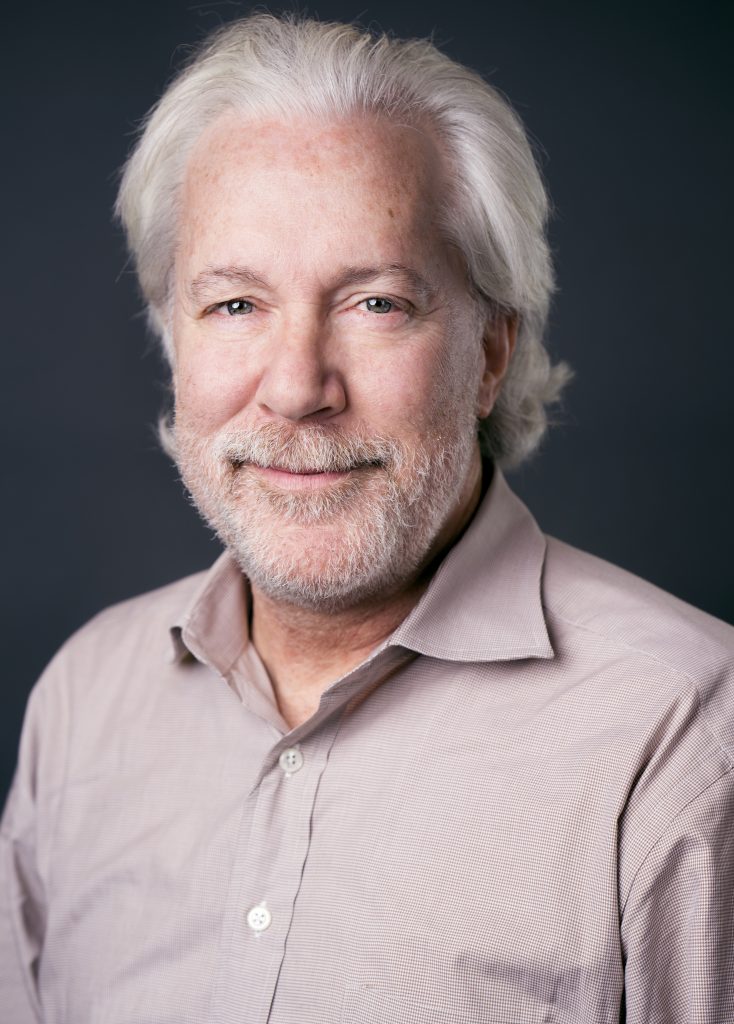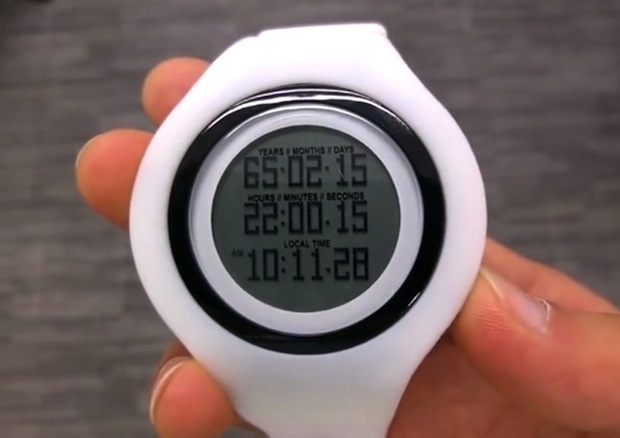Ticktock. Ticktock. Ticktock. Hear that? Those are the seconds of life slipping away we can never have back. As Woody Allen once said, “I don’t mind dying I just don’t want to be there when it happens.” None of us have any idea how much time we have left. Well, now there is a ‘disruptive spiritual technology’ designed for all those non-consumers of existing religious products who want an accessible and usable way to experience awareness of their own mortality.
Tikker is a wristwatch that counts down your life! Using an algorithm like the one used by the federal government to figure life expectancy, Tikker lets you watch, on a large, dot-matrix display, the years, months, days, hours, minutes and seconds you have left. Tikker’s inventor, Fredrik Colting, a former gravedigger, calls Tikker “the happiness watch” because watching your life slip away reminds you of the preciousness of each moment and the choice you have to infuse life with meaning and significance, with love and beauty, with clarity and appreciation, with being the best person one can be.
Not surprisingly, every religious tradition has rituals, practices and meditations to make us conscious of our death in the hope we savor life more deeply. We all know the stories of people who in the face of death reprioritized their lives and psychological studies suggest awareness of death can motivate increased expressions of tolerance, egalitarianism, compassion, empathy and pacifism. I had a teacher who used to say, “waste your time and waste your life, master your time and master your life.”
Will the new technology of Tikker work to get the age-old spiritual job done of helping us realize that every moment of life is a miracle? Could a countdown to death lead us to a more ecstatic life? I ordered one and will let you know…oh, and it also gives the time of day.

Rabbi Irwin Kula is a 7th generation rabbi and a disruptive spiritual innovator. A rogue thinker, author of the award-winning book, Yearnings: Embracing the Sacred Messiness of Life, and President-Emeritus of Clal – The National Jewish Center for Learning and Leadership, he works at the intersection of religion, innovation, and human flourishing. A popular commentator in both new and traditional media, he is co-founder with Craig Hatkoff and the late Professor Clay Christensen of The Disruptor Foundation whose mission is to advance disruptive innovation theory and its application in societal critical domains. He serves as a consultant to a wide range of foundations, organizations, think tanks, and businesses and is on the leadership team of Coburn Ventures, where he offers uncommon inputs on cultural and societal change to institutional investors across sectors and companies worldwide.


Comment from Avram Kogen, posted with permission: Tikker appears to be a fascinating way to engage people in the finiteness of their lives, a sort of antidote to the long-lamented phenomenon that “youth is wasted on the young”. Thank you for bringing this to the attention of the list.
Of course, the idea that we can pinpoint a person’s life expectancy is more of a hope than a certainty. In my “day job” in the life insurance field, I have learned that insurance companies have two main actuarial tables. The better-known table is the one used to estimate life expectancy for those who are undertaking to purchase life insurance. The lesser-known table is the one used for those purchasing annuities.
For life insurance, the consumer is, in effect, betting that s/he will live short, while the insurance carrier is betting that the same individual will live long. In the world of annuities, the bet is reversed: the individual is betting on living ling, while the carrier is betting on a short life. (This comes into play when a person, having accumulated a substantial sum within the account, seeks to translate that sum into a stream of monthly payments, which the insurer will guarantee for the lifetime of the annuitant.)
It turns out that the population of those well-off enough to undertake annuities has a variety of health advantages (compared to the general population, or to the population of those seeking life insurance), and so the actuarial tables for the annuity field can be counted on to project a significantly longer lifespan.
Who knew?
Avram Kogen